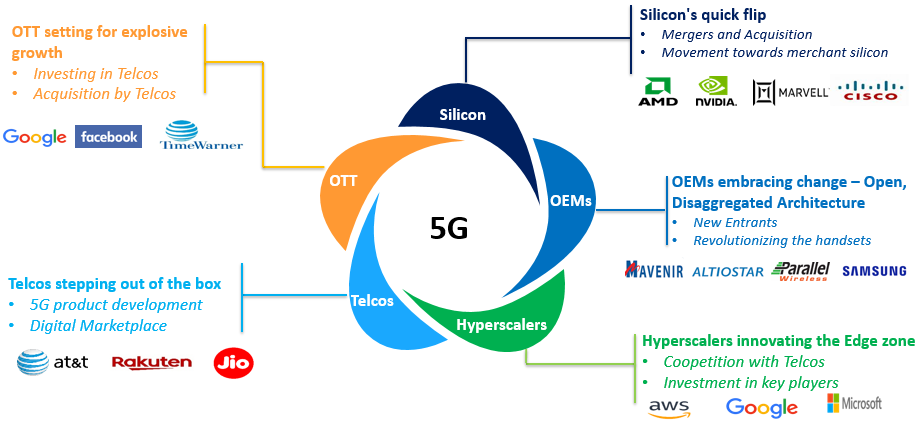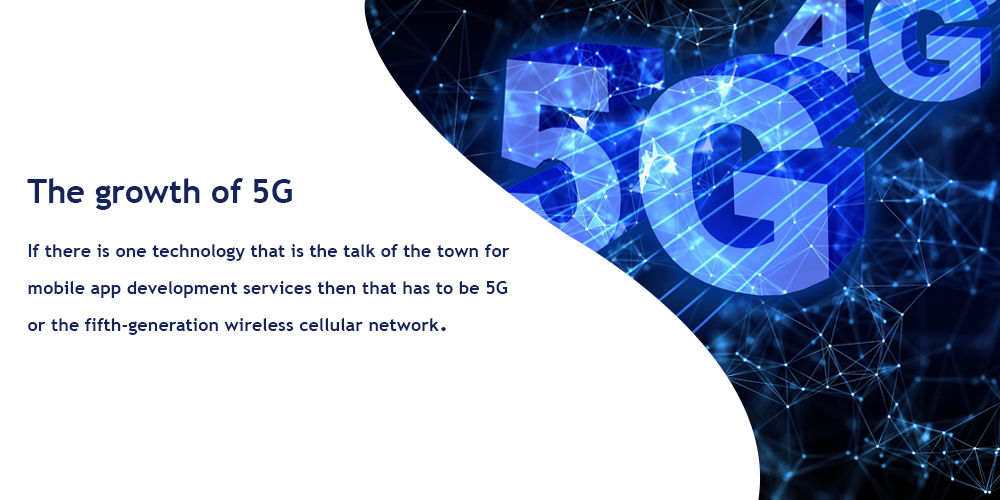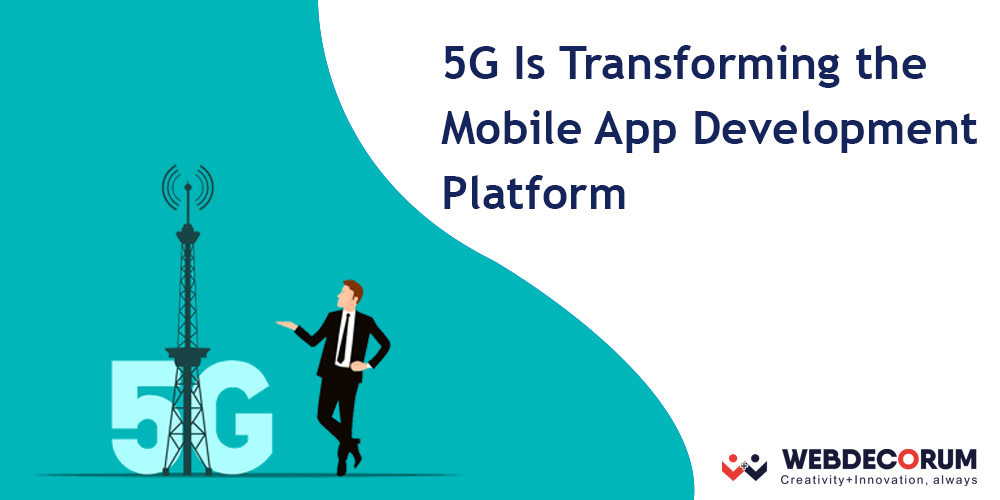How 5G Transforming Mobile App Development
Due to high-end consumer preferences, technology is evolving at a fast pace. There is always a need to improve connectivity, gain higher speed and have easier 5G accessibility. For that, technology is always in the advancing mode with new features coming along. It is up to the developers to try to match consumer needs with the growing demands of smart 5G device users.
According to the latest count, there were around 3.5 billion mobile phone users in 2020 and that number has grown exponentially within the last two years. It was 3.8 billion in 2021 and the final count for 2020 is yet to come. It is mainly because the smart device category has entered some of the largest populated countries and their emerging economies.
The current changing vibe to move in with:
From what can be seen, 5G is all set to change the mobile industry, and the reputed mobile app development services through Webdecorum should match up with the services ASAP. The way 5G has been prepared, is going to have one massive impact on the current mobile applications as well.
- The 5G technology is all set to take the user experience up by multiple notches with its enhanced features, as presented at a better speed.
- All the mobile apps, which are 5G powered will help the users to get hands-on progressive technologies.
- Some of the major examples of such technologies are AR and VR values, cloud computing, Ultra HD videos, and IoT.
- Once everything is set in its place, 5G is able to transform the current mobile app development sector completely.

Features of 5G that you cannot avoid influencing the app development category:
When it is about the future of communication, 5G is able to lay the foundation through the new network architecture. The main goal of this technology is to disrupt industries by presenting seamless connected experiences. These are way better when compared to the fixed broadband value. That’s why app developers have to accommodate this high technology in their lot. Let’s focus on some of the features of 5G, which made application development company Webdecorum moves toward this notion.
Comparing Between 4G and 5G Networks
| Feature | 4G Network | 5G Network |
|---|---|---|
| Speed | Up to 1 Gbps | Up to 20 Gbps |
| Latency | 20-30 milliseconds | 1-10 milliseconds |
| Network Architecture | Centralized | Decentralized |
| Spectrum | Limited | Diverse |
| Connection Density | Up to 2000 devices per square kilometer | Up to 1 million devices per square kilometer |
| Energy Efficiency | Less efficient | More efficient |
| Coverage | Wide coverage | Limited coverage |
| Use Cases | Mobile internet, video streaming, gaming, etc. | Smart cities, IoT, autonomous vehicles, telemedicine, etc. |
IoT implementation gets flawless with 5G:
5G can easily connect with smartwatches, vehicles with internet connections, and intelligent locks in nearby houses. Connecting with these devices will help in broader IoT applications in the app development category.
- The developed mobile app will connect with intelligent gadgets seamlessly.
- It helps in performing optimally on narrow bandwidth and with less power consumption.
Developers can take proper advantage of ML and AI and then combine their power with 5G to ensure that the apps work smarter.

Get to present a smoother video streaming feature:
It is well-anticipated that the 5 G-powered applications will deliver better media experiences to users. It will help in supporting high-resolution live streaming at a faster speed. That’s another advantage of mobile app development services.
- The major downloading speed can range anywhere from 1GBPS to 20, based on the 5G coverage.
- The latency can be pretty low as one millisecond. So, that prevents any form of hiccups down the line.

Great GPS performance throughout:
GPS-centric mobile app development will get a boost with 5G technology. Thanks to the faster speed and better connectivity of 5G networks, navigation apps can work better and display real-time results.
Great apps designed for smarter cities:
5G will help in creating smart cities, by equipping the same with various interconnected devices and sensors. So, that provides a platform for mobile app development where various apps can come together to create real-time disaster alerts, prevent crime, and many more.
Better options for cloud compatibility:
One of the major perks of 5G is scalability. It comes with a higher transmission rate to help files transfer to the cloud faster and easier. 5G helps in supporting the storage and then shifting of technical infrastructure to the current cloud. So, now, it is highly possible for developers to reduce dependency on device hardware and enable cloud accessibility right into mobile app development.

The ultimate latency to follow:
5G is here with ultra-reliable low latency communications or URLLC. It is mainly a subset of 5G network architecture, which ensures efficient scheduling of data transfer. It helps in procuring shorter transmissions through larger subcarriers.
High-end connectivity to follow:
5G will present connectivity to around a million devices. Such increased connection density will help in the smoother addition of IoT in mobile apps. This feature is likely to overcome all the limitations that 4G has. It will further enhance its working mode to handle colossal network traffic!
Now you know why mobile app development companies like Webdecorum are moving towards the value of 5G. Once you start using it, you will know why!
FAQ
What is 5G?
5G is the fifth generation of mobile networks that offer higher speed, lower latency, and greater capacity than its predecessor, 4G. It uses advanced technologies such as millimeter-wave frequencies and massive MIMO (multiple input, multiple outputs) to transmit data more efficiently. Here are the three most important things you should know about 5G:
- 5G promises to deliver download speeds that are up to 100 times faster than 4G.
- It has the potential to enable new technologies such as self-driving cars and remote surgery.
- 5G networks are being deployed worldwide, with major telecom companies investing billions of dollars in their infrastructure.
How is 5G different from 4G?
5G is different from 4G in several ways. Firstly, it offers much faster download and upload speeds. Secondly, significantly lower latency means that devices can transmit data more quickly. Thirdly, 5G networks are capable of connecting a much larger number of devices than 4G networks. Here are the three most important things you should know about the differences between 5G and 4G:
- 5G has the potential to enable new applications and use cases that were not possible with 4G.
- 5G networks use higher frequency bands than 4G networks, which allows for more data to be transmitted at once.
- 5G networks require more infrastructure than 4G networks, which means that it will take longer and be more expensive to deploy them worldwide.
What are the benefits of 5G?
5G offers several benefits over previous generations of mobile networks. Firstly, it provides faster download and upload speeds, which means that users can download and upload large files more quickly. Secondly, lower latency enables more effective use of applications such as virtual and augmented reality. Finally, 5G has the potential to enable new technologies and use cases, such as self-driving cars and remote surgery. Here are the three most important things you should know about the benefits of 5G:
- 5G will enable the creation of new industries and business models.
- It will improve the quality of life for individuals by providing faster and more reliable mobile connectivity.
- 5G networks will be more energy-efficient than previous generations of mobile networks, which will reduce their impact on the environment.
What are the challenges of implementing 5G?
Implementing 5G networks poses several challenges. Firstly, 5G networks require more infrastructure than previous generations of mobile networks, which means that it will take longer and be more expensive to deploy them worldwide. Secondly, the higher frequency bands used by 5G networks have shorter range and are more easily blocked by obstacles such as buildings and trees, which means that more cell sites will be required to provide coverage. Finally, there are concerns about the potential health effects of the higher frequency electromagnetic radiation used by 5G networks. Here are the three most important things you should know about the challenges of implementing high speed network:
- Deploying 5G networks will require significant investment from telecom companies and governments.
- It will take time to build the infrastructure required to support 5G networks.
- There is ongoing debate about the potential health effects of 5G networks, although there
For more information and free consultation, please contact us at info@webdecorum.com or by click here.




